Vallabhacharya Jayanti, celebrated on Monday, April 13, 2026 , honors the birth of the revered philosopher and saint, Vallabhacharya, who founded the Pushtimarg sect of Hinduism. A day of deep spiritual reflection and devotion, this auspicious occasion commemorates his teachings, which emphasize the grace of Lord Krishna and the path of devotion (bhakti). Vallabhacharya’s life and work continue to inspire millions of devotees, and his teachings on the concept of 'Shuddhadvaita' (pure non-dualism) have had a lasting influence on devotional philosophy. As we observe Vallabhacharya Jayanti, it is a time to revisit his profound contributions to spiritual thought and practice, and to seek divine blessings for peace and prosperity.
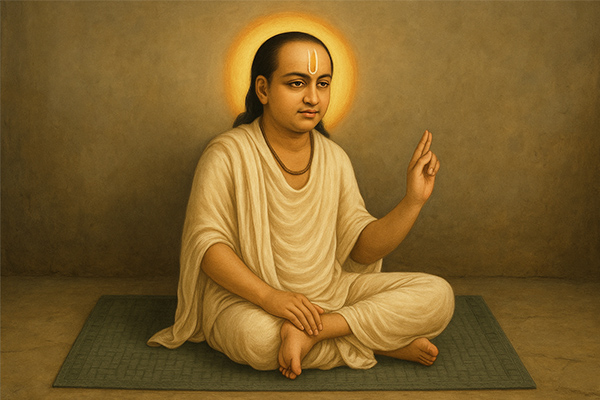
Festival Date, Time, Muhurat & Tithi
Vallabhacharya Jayanti will be observed on Monday, April 13, 2026
Ashtami Tithi (8th lunar day) of the Chaitra month as per the lunar calendar.
Key Timings for Vallabhacharya Jayanti 2026:
547 th Birth Anniversary of Shri Vallabhacharya
Ekadashi Tithi Begins - 01:16 AM on Apr 13, 2026
Ekadashi Tithi Ends - 01:08 AM on Apr 14, 2026
Note: Sunrise and sunset vary by region and date due to India's geographical diversity. For exact timings, refer to local astronomical data.
Significance & Importance of Vallabhacharya Jayanti
Vallabhacharya Jayanti is a significant day for the followers of the Pushtimarg tradition, a sect dedicated to the worship of Lord Krishna, particularly in His form as Shrinathji. This day honors the birth of Vallabhacharya, a revered saint and philosopher who played a key role in shaping devotional practices in India. His teachings continue to resonate deeply with millions of devotees, emphasizing love, grace, and unconditional devotion to Krishna. The celebration of Vallabhacharya Jayanti offers an opportunity to reflect on his life and teachings, which have left a lasting impact on the spiritual landscape of India.
One of Vallabhacharya's most profound contributions was the establishment of Pushtimarg, which translates to the 'Path of Grace.' Unlike other sects that focus on rituals or intellectual knowledge, Pushtimarg is centered around the idea that devotion to God is not earned through efforts but granted by divine grace. It emphasizes the unconditional love between the devotee and Krishna, where the devotee surrenders completely to Krishna’s will, trusting in His divine grace. This unique approach to devotion offers a spiritual path that is accessible to all, regardless of one’s social or economic status.
In addition to his contributions to devotional practices, Vallabhacharya is also known for his philosophical teachings, particularly the concept of Shuddhadvaita, or pure non-dualism. According to Vallabhacharya, the soul and God are not separate; they are eternally united in a divine relationship. This philosophy rejects the idea of duality between the divine and the human, asserting that everything in the universe is an expression of God’s divine nature. For Vallabhacharya, the realization of this oneness is the path to liberation, and it is through devotion and surrender that a devotee can experience the bliss of union with the divine.
Vallabhacharya Jayanti serves as a reminder to followers to deepen their devotion, reflect on his teachings, and strive to live lives of humility, selflessness, and service. It is a day to celebrate the grace and love of Krishna, which can transform the hearts of devotees, leading them closer to spiritual fulfillment and divine bliss. The observance of this day inspires not just religious devotion, but also a profound sense of inner peace, compassion, and connection with the divine.
History of Vallabhacharya Jayanti Festival
Vallabhacharya Jayanti, celebrated on April 24, marks the birth of Vallabhacharya, a revered saint, philosopher, and theologian who founded the Pushtimarg tradition. His birth is a momentous occasion in the history of Indian spirituality, for his teachings and contributions to the understanding of devotion, love for God, and divine grace have had a lasting impact on millions of devotees worldwide. The festival of Vallabhacharya Jayanti honors his life and teachings, celebrating the profound influence he had on religious practices, philosophy, and devotional paths in India.
Vallabhacharya was born in 1479 CE in the town of Champaran, in present-day Bihar, India. From an early age, Vallabhacharya showed a remarkable spiritual inclination and devotion to Lord Krishna. His exceptional scholarship in Vedanta, his deep understanding of the scriptures, and his unyielding love for Lord Krishna led him to become one of the most influential saints of his time. Unlike many religious leaders who emphasized rituals or ascetic practices, Vallabhacharya focused on the importance of devotion (bhakti) and the grace of God as the ultimate means to attain liberation.
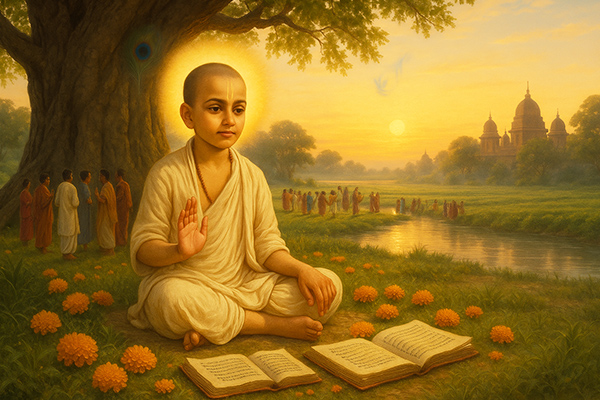
A significant milestone in Vallabhacharya’s spiritual journey was his encounter with the deity of Shrinathji in the town of Nathdwara. He recognized the deity as the direct manifestation of Lord Krishna and dedicated his life to spreading the worship of Shrinathji. This devotion eventually led to the establishment of the Pushtimarg sect, which places a strong emphasis on the idea of divine grace. In this path, followers believe that Krishna, in His infinite compassion, bestows His grace upon the devotee, enabling them to experience the ultimate union with the divine. This approach to devotion is characterized by simplicity, humility, and a deep sense of love for the divine, where the devotee seeks nothing but the closeness of Krishna.
Vallabhacharya’s philosophy, known as Shuddhadvaita (pure non-dualism), became the foundation of his teachings. Unlike traditional dualistic interpretations of the relationship between God and the individual soul, Shuddhadvaita asserts that the soul and God are eternally united in a divine bond. According to Vallabhacharya, the ultimate truth is a unified reality where there is no distinction between the divine and the created world. This doctrine emphasizes the idea that all creation is an expression of God’s divine will and that the soul’s liberation is achieved through recognizing and surrendering to this oneness.
The observance of Vallabhacharya Jayanti is not merely a commemoration of his birth but also an opportunity for his followers to renew their commitment to his teachings. It is a day for devotees to come together in prayer, chant the sacred name of Krishna, and offer their devotion to Shrinathji, expressing gratitude for Vallabhacharya’s guidance. Temples dedicated to Shrinathji and followers of Pushtimarg celebrate this day with elaborate rituals, including devotional singing (bhajans), worship (puja), and discourses on the life and teachings of Vallabhacharya.
In regions where Vallabhacharya’s influence remains strong, the Jayanti celebrations are marked by vibrant processions, devotional gatherings, and the sharing of food and blessings among communities. The day serves as a reminder of the power of grace, the importance of humility, and the path of selfless devotion to Krishna. Vallabhacharya’s teachings continue to inspire millions to live lives of love, devotion, and service, seeking to experience the divine presence in every aspect of their existence.
Thus, Vallabhacharya Jayanti is more than a festival; it is a celebration of spiritual ideals that transcend time and space, reminding devotees of the eternal love and grace of Lord Krishna, and the profound wisdom imparted by Vallabhacharya that continues to guide spiritual seekers on their path.
How to Celebrate Vallabhacharya Jayanti
Vallabhacharya Jayanti is a significant occasion for the followers of the Pushtimarg tradition, and it is celebrated with devotion and reverence. The celebration can include several spiritual practices and rituals that honor the life and teachings of Vallabhacharya.

The day usually begins with a ritualistic bath followed by prayers and offerings to Lord Krishna, especially in His form as Shrinathji. Devotees visit temples dedicated to Shrinathji or Pushtimarg to participate in the morning prayers. This may involve singing devotional hymns (bhajans) and performing arati, where the sacred lamp is offered to the deity.
A key part of the celebration is the recitation of scriptures, particularly those that highlight Vallabhacharya’s teachings, such as his philosophy of Shuddhadvaita (pure non-dualism). Devotees may gather in temples or homes to listen to discourses about his life and the importance of devotion, surrender, and grace.
During the day, special prayers and offerings (puja) are conducted, where food and flowers are presented to Shrinathji as a symbol of devotion. In some places, devotees also observe fasting or take simple meals to maintain a sense of humility and reverence. The evening may include more bhajans and devotional singing, where communities come together to express their love and gratitude to Krishna.
The day is also a time for spiritual reflection, where followers reflect on Vallabhacharya's teachings of love, humility, and grace. Families may also spend time together, discussing his philosophy and how it can be applied in daily life. In some places, there are processions, and the deity of Shrinathji may be taken out in a beautifully decorated palanquin as part of the celebrations.
Overall, Vallabhacharya Jayanti is a day dedicated to honoring the teachings of Vallabhacharya through prayer, devotion, and community gatherings, with a focus on divine grace, devotion to Krishna, and the path of selfless love.
Vallabhacharya Jayanti Puja Vidhi (Puja Procedure)
_199910.jpg)
The Vallabhacharya Jayanti Puja Vidhi is a sacred and meaningful ritual that honors the life and teachings of Vallabhacharya. The puja is centered around devotion to Lord Krishna, especially in His form as Shrinathji. Here’s a step-by-step guide for the puja procedure:
- Cleanliness and Preparation : Begin by cleaning the house or the place where the puja will be performed. Ensure the area is clean and free from distractions. Prepare a small altar or puja thali with a picture or idol of Shrinathji, along with flowers, incense sticks, a lamp, and offerings of fruits and sweets.
- Offer Prayers for Purity : Start the puja by chanting a prayer for purity, seeking blessings for peace and sanctity in the surroundings. This can be a simple prayer like 'Om Shanti Shanti Shanti' to invoke divine peace.
- Invocation of Lord Krishna : Light the lamp (diya) and incense sticks, and offer them to the idol or picture of Shrinathji. While doing so, chant the name of Lord Krishna or specific mantras like 'Om Namo Bhagavate Vasudevaya' to invoke His presence.
- Recite Vallabhacharya’s Teachings : Take a moment to reflect on Vallabhacharya’s teachings, especially his philosophy of Shuddhadvaita (pure non-dualism), and the concept of grace (pushti). Devotees can chant or listen to hymns or shlokas that highlight his teachings. One can recite the 'Pushtimarg Prarthana' or any relevant devotional text.
- Offerings to the Deity : Offer flowers, fruits, and sweets to the idol or picture of Shrinathji as a symbol of love and devotion. Each offering should be made with gratitude and reverence, acknowledging Lord Krishna's grace.
- Chanting of Bhajans : Singing devotional bhajans or hymns dedicated to Lord Krishna is an integral part of the puja. Devotees may sing songs such as 'Jai Shrinathji' or other devotional songs expressing love and surrender to Krishna.
- Prayers for Blessings : After completing the offerings and prayers, offer a prayer to Lord Krishna and Vallabhacharya, seeking blessings for prosperity, peace, and spiritual progress. This is a time for personal reflection, asking for guidance and divine grace.
- Conclude with Aarti : To conclude the puja, perform the arati (ritual of waving the lighted lamp around the deity). Sing the arati song, 'Jai Shrinathji Ki,' as a way of showing reverence and gratitude to the deity.
- Distribution of Prasadam : After the puja, the offerings made to Lord Krishna (such as fruits, sweets, and flowers) are distributed among family members and devotees as prasadam, symbolizing the divine blessings received during the ritual.
By following these steps, the Vallabhacharya Jayanti Puja is an opportunity to connect spiritually with Lord Krishna, honor the teachings of Vallabhacharya, and seek divine blessings through devotion and prayer.
Vallabhacharya Jayanti Puja Mantra
The Hare Krishna mantra, also known as the Mahamantra, is a highly revered chant in the Gaudiya Vaishnavism tradition, popularized by the followers of the International Society for Krishna Consciousness (ISKCON). This mantra is used for meditation, prayer, and devotion to Lord Krishna. It is considered a powerful means of attaining spiritual enlightenment, purifying the mind, and connecting with the divine.
The Hare Krishna mantra is as follows:
'Hare Krishna, Hare Krishna, Krishna Krishna, Hare Hare,
Hare Rama, Hare Rama, Rama Rama, Hare Hare.'
Vallabhacharya Jayanti Vrat Vidhi (Fasting Procedure)
_199912.jpg)
The Vallabhacharya Jayanti Vrat is observed by devotees as a way to honor the life and teachings of Vallabhacharya. It is a day for deep spiritual reflection and devotion to Lord Krishna. The day typically begins with an early morning bath, symbolizing purity and preparation for the fast. After the bath, devotees cleanse their surroundings, ensuring the space is peaceful and free from distractions, creating an ideal environment for prayer and worship.
The fast itself is observed with devotion and sincerity. While the specifics of the fast can vary, it is commonly practiced as a partial fast. Devotees may refrain from consuming grains and lentils, instead focusing on fruits, milk, and other simple offerings. Some choose to abstain from all food for the day as a more intense form of fasting. The purpose of the fast is not just to abstain from food, but to purify the mind and spirit, dedicating the entire day to prayer, meditation, and spiritual growth.
Throughout the day, devotees engage in prayers, offering devotion to Lord Krishna and Vallabhacharya. Many recite mantras and hymns, such as the Hare Krishna mantra or specific prayers associated with Vallabhacharya, seeking his blessings for spiritual progress. The fast is a way of showing love, respect, and gratitude, focusing on the grace and teachings of Vallabhacharya.
At the end of the day, devotees may break their fast with a simple meal, reflecting on the spiritual benefits gained from the day of devotion and discipline.
Vallabhacharya Jayanti Vrat Katha (Traditional Fasting Story)
The Vallabhacharya Jayanti Vrat Katha is a traditional fasting story that reflects the significance of Vallabhacharya's teachings and the spiritual benefits of observing this vrat. The story highlights the deep devotion, purity, and grace associated with Vallabhacharya and the practices he advocated.
According to tradition, once a devotee approached Vallabhacharya to seek his guidance on how to attain divine grace and the blessings of Lord Krishna. Vallabhacharya, being a great philosopher and spiritual leader, instructed the devotee to observe a day of fasting in honor of Lord Krishna, dedicating the entire day to prayer, meditation, and surrender. Vallabhacharya explained that fasting on this auspicious day, which marks his own birth, would purify the soul and attract Krishna’s divine grace.
_199911.jpg)
The devotee followed Vallabhacharya's instructions, observing the fast with great reverence. As the day unfolded, the devotee spent the day chanting the names of Lord Krishna, offering prayers, and reflecting on Vallabhacharya's teachings of love, surrender, and devotion. By the end of the day, the devotee felt a profound sense of peace and divine connection, realizing that the fast had brought him closer to Krishna and to the path of spiritual enlightenment.
This story illustrates the power of Vallabhacharya Jayanti Vrat, emphasizing that fasting is not merely a physical act but a spiritual practice that cultivates devotion, purifies the heart, and invites the grace of the divine. The vrat is a way to honor Vallabhacharya's teachings and to express love and gratitude toward Lord Krishna, seeking their blessings for guidance, peace, and spiritual progress. Through the practice of fasting and devotion, followers believe that they can strengthen their bond with the divine and experience the transformative power of grace.
Puja Utensils, Essentials
Rudra Centre brings an extensive collection of Puja Articles which caters to all that is required for daily and special Puja Vidhis. We offer variants of designs and sizes in each category. The list includes handcrafted Puja Mandirs, Puja Pedestals, offering Bowls, Panchpatra, intricately carved Puja Thalis, Abhishek Vessels, in different materials, Pure Silver/German Silver articles like Kalash, set of Shodash Upachara and Several other Puja Articles, which we deliver at your doorstep.

Shri Krishna puja mantra Jaap
Lord Krishna is the eighth incarnation of Lord Vishnu. Lord Krishna in the Dwaparyug took birth to establish Dharma and to give humanity the Srimad Bhagavad Gita. Lord Krishna is a perfect guide, friend, lover, son and child, he taught mankind to walk the path of truth. Lord Krishna was born to Devaki and Vasudeva to provide enlightenment to the mankind. The Omnipotent Lord Krishna is considered as the Supreme Being who revealed his Vishwaroopa to Arjuna during Mahabharata. Lord Krishna provides it’s devotees with protection, knowledge and liberation.
Rudra Centre Puja Services is the oldest and most trusted Online Puja Services provider in the world. Over 20 years we have organized Yagnas, Pujas, Homas and Kathas like Ati Rudra Mahayajna, Sahasra Chandi Homa, Akhand Ramayan Paath, Shiva Maha Puran Katha, 4 Prahar Mahashivratri Mahapuja with teams of 100’s of curated priests for the benefit of mankind and our global clientele.
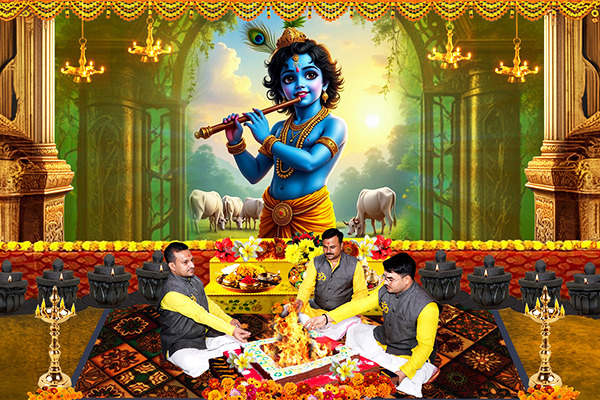
Conclusion
Vallabhacharya Jayanti is a deeply spiritual occasion that offers an opportunity for devotees to reconnect with the teachings of Vallabhacharya, the revered philosopher and founder of the Pushtimarg tradition. This day serves as a reminder of the profound wisdom he imparted, particularly his philosophy of Shuddhadvaita (pure non-dualism) and his emphasis on the power of divine grace. Through fasting, prayer, devotion, and reflection, followers honor Vallabhacharya’s life and seek to embody his teachings of unconditional love and surrender to Lord Krishna.
The celebration of this festival is not only a remembrance of Vallabhacharya's contributions but also an opportunity for spiritual growth. By observing rituals with sincerity and devotion, devotees deepen their connection with Lord Krishna and strengthen their commitment to the path of devotion (bhakti). Vallabhacharya Jayanti is a day that reminds us of the power of grace, the importance of humility, and the transformative effect of unconditional love for the divine. It is a time for spiritual renewal and a reaffirmation of faith, helping each devotee on their journey toward inner peace and divine union.


-in-Astrology.jpg)
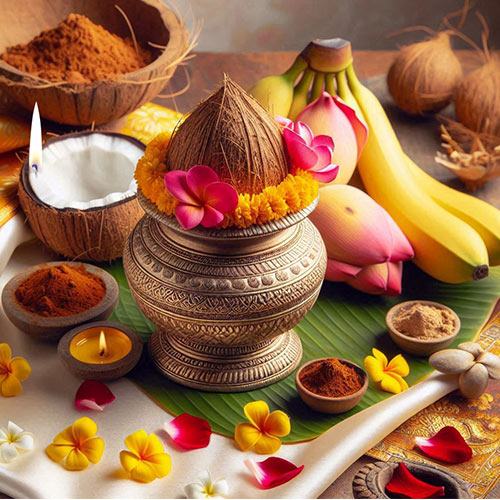

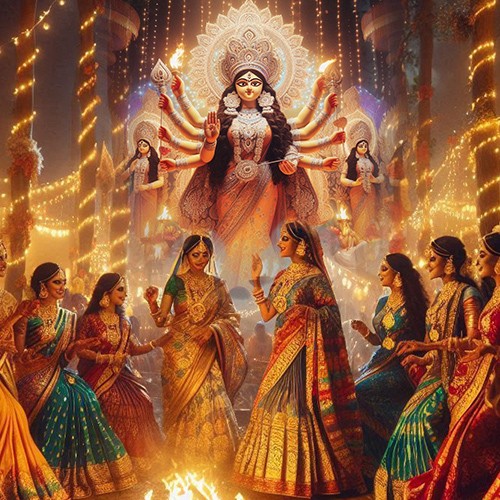
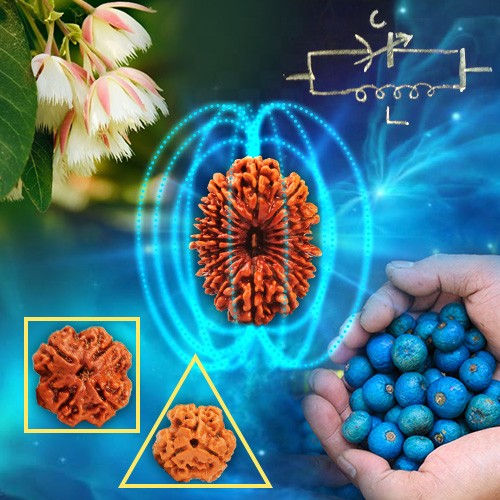

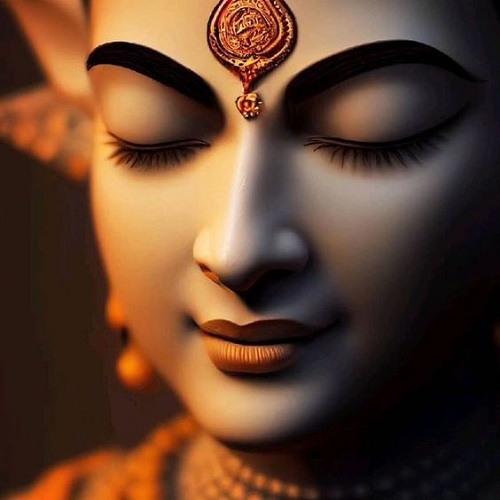
.jpg)
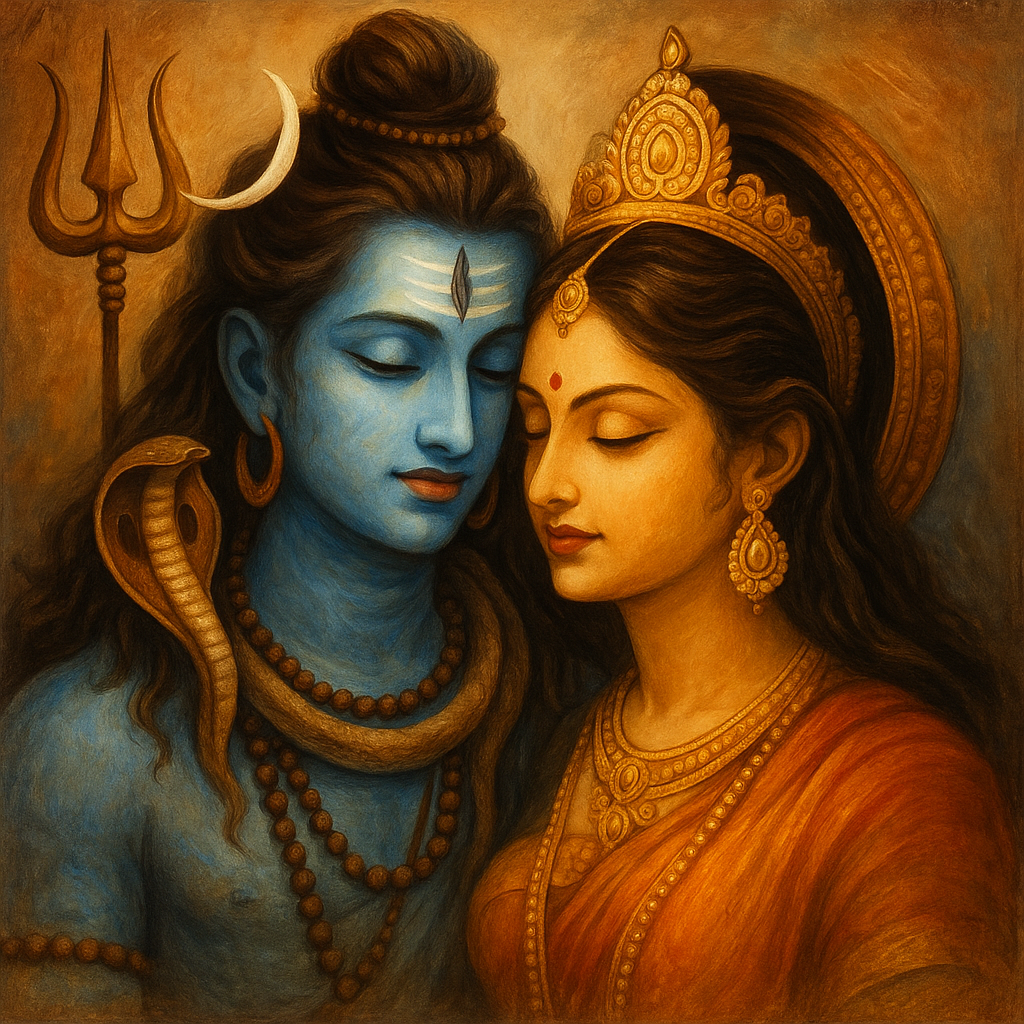
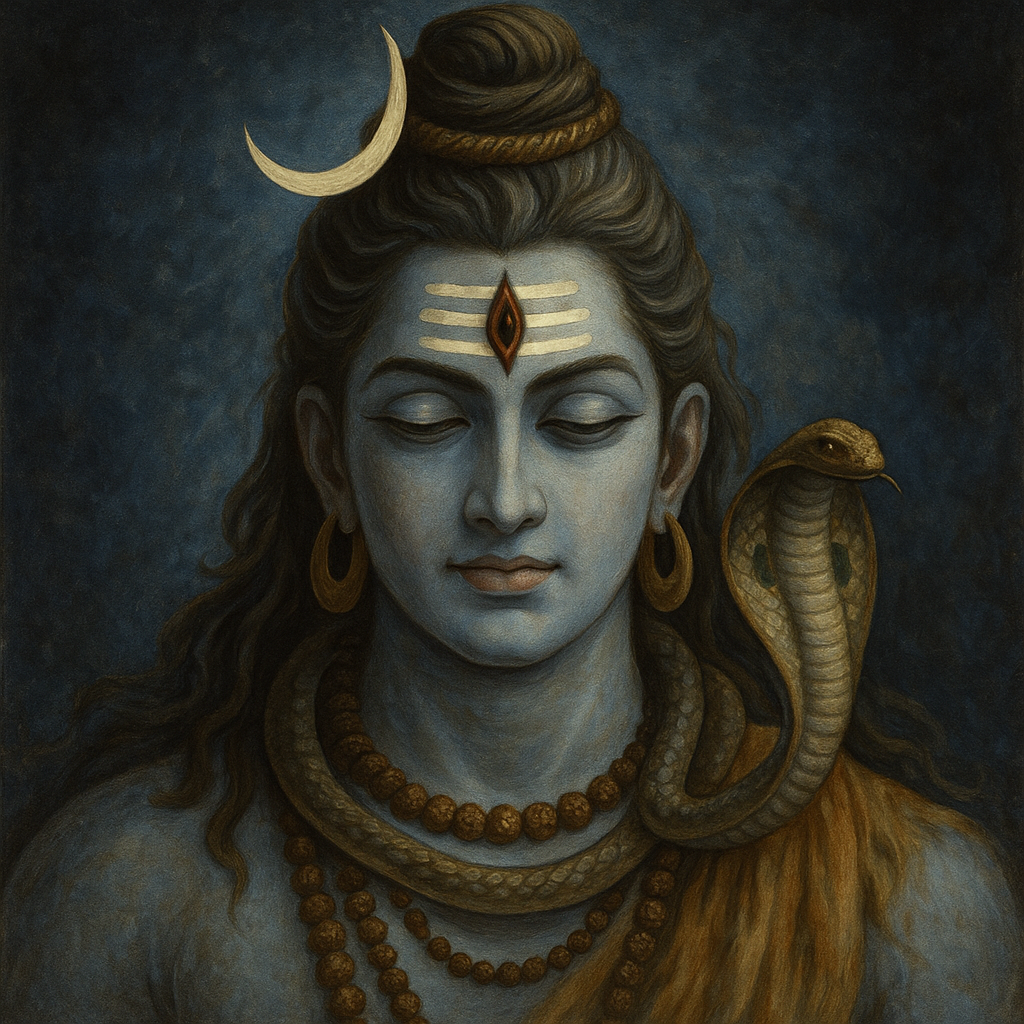
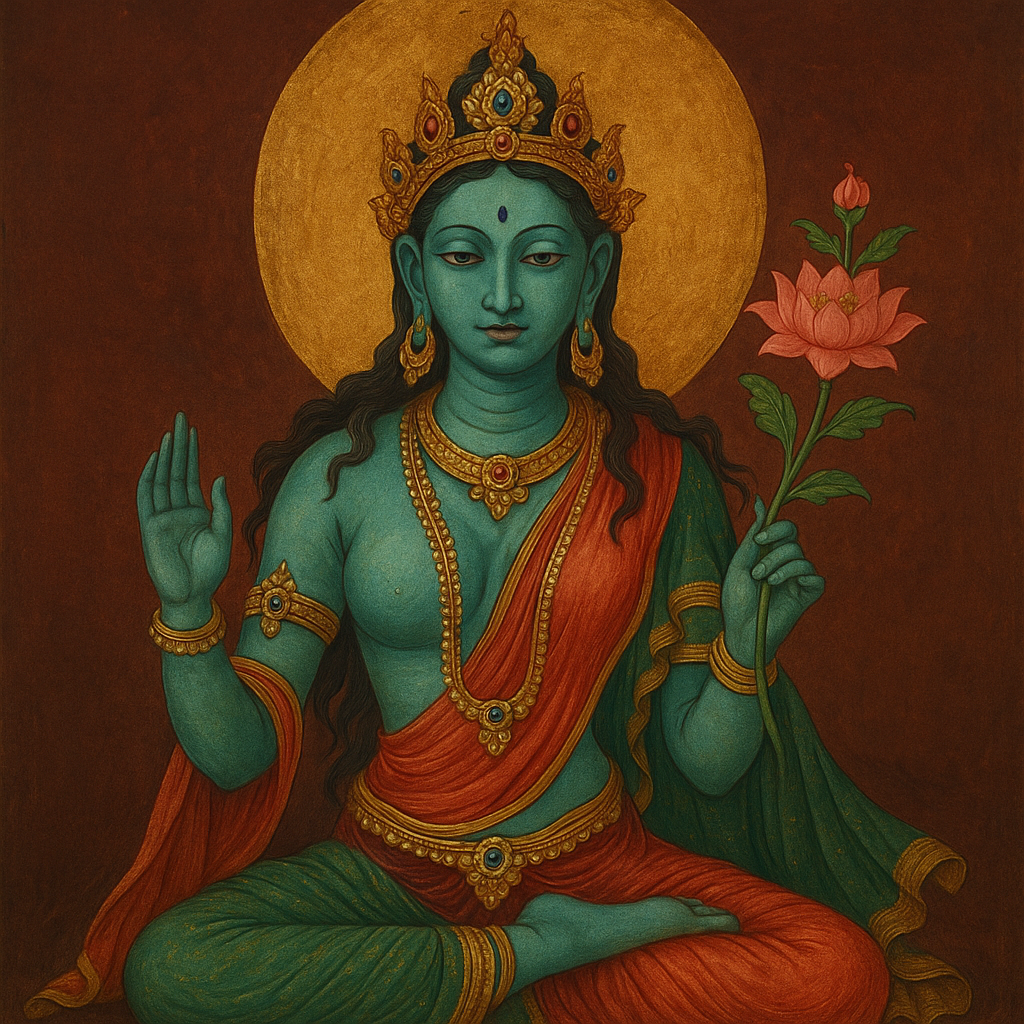
Comments 0
Leave your thought here